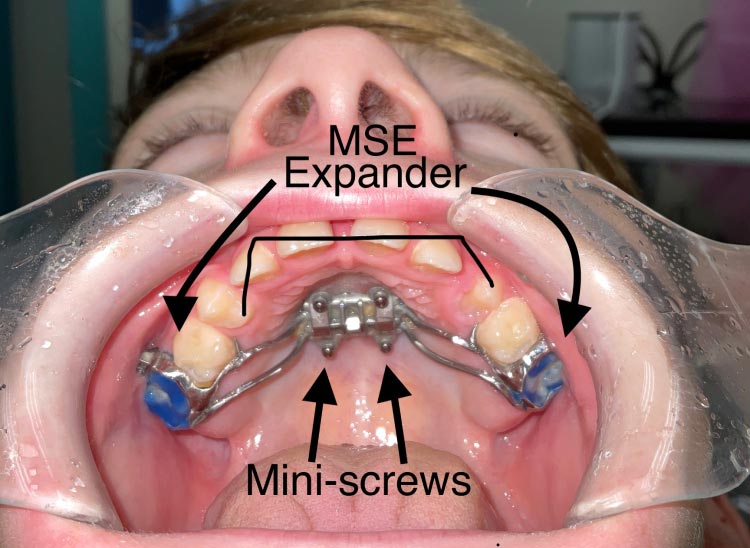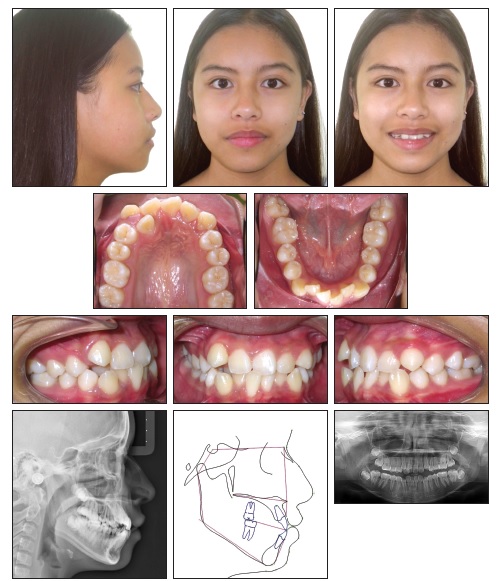A palatal expander is a dental device used to widen the upper jaw in order to create more space for the teeth. While it is an effective treatment for a variety of dental issues, such as overcrowding and crossbites, it can also have some side effects on the nose.
One of the most common side effects of a palatal expander is nasal congestion. This occurs because the expander puts pressure on the nasal passages, making it difficult for air to flow freely through the nose. This can lead to a stuffy or blocked nose, making it harder to breathe through the nose.
Another side effect of a palatal expander is an altered appearance of the nose. The pressure from the expander can cause the nasal bones to shift, resulting in a wider or flatter nose. This change in the shape of the nose may be temporary or permanent, depending on the individual and the duration of the treatment.
What is a Palatal Expander?
How Does a Palatal Expander Work?
When the screw in the palatal expander is activated, it applies gentle pressure to the upper jaw, gradually widening it over time. The expansion occurs at the mid-palatal suture, which is a cartilaginous joint that connects the two halves of the maxilla. By widening the upper jaw, the palatal expander helps create more space for the teeth to align properly and improves overall facial symmetry.
The activation of the palatal expander is typically done by turning a key or screw located at the center of the device. This can be done by the patient or a dental professional, depending on the specific treatment plan. The amount of expansion and the duration of treatment vary depending on the individual’s needs and the recommendation of the orthodontist.
Purpose of Palatal Expander
A palatal expander is a dental device used to widen the upper jaw. It is commonly used in orthodontic treatment to correct issues related to dental alignment and bite. The purpose of a palatal expander is to create more space in the mouth, particularly in the upper arch, to allow for proper alignment of the teeth and improve overall oral health.
Orthodontic Treatment
Orthodontic treatment aims to correct malocclusions, or improper bites, which can affect both the appearance and function of the teeth and jaws. A palatal expander is often used as part of this treatment plan to address issues such as crowding, crossbites, and narrow arches.
By widening the upper jaw, a palatal expander helps to create additional space for the teeth to move into their ideal positions. This can help to alleviate crowding and improve the alignment of the teeth. Additionally, a properly aligned bite can improve overall oral function, including chewing and speaking.
Benefits of Palatal Expansion
Palatal expansion offers several benefits for individuals undergoing orthodontic treatment:
- Improved dental alignment: By creating more space in the mouth, a palatal expander allows the teeth to align properly, reducing the need for extractions and improving overall dental alignment.
- Enhanced facial aesthetics: Correcting dental alignment can improve the appearance of the face and smile, leading to increased self-confidence and improved overall facial aesthetics.
- Improved oral function: A properly aligned bite can improve oral function, including chewing and speaking. This can have a positive impact on overall oral health and quality of life.
- Prevention of future dental issues: Palatal expansion can help prevent future dental issues, such as crowding and impacted teeth, by creating adequate space for the teeth to erupt properly.
Conclusion
How Does a Palatal Expander Work?

A palatal expander is a dental device that is used to widen the upper jaw. It is commonly used in orthodontic treatment to correct issues such as crowding, crossbite, and narrow arches. The expander works by applying gentle pressure to the palate, or roof of the mouth, gradually widening it over time.
There are different types of palatal expanders, but the most common one is a removable appliance that consists of a metal framework with a screw in the middle. The expander is custom-made to fit the patient’s mouth and is attached to the upper molars using bands or wires.
Once the expander is in place, the patient or their parent will be instructed on how to activate the screw. This is done by turning the screw a small amount each day using a special key. The turning of the screw creates tension in the expander, which in turn applies pressure to the palate.
Over time, the pressure causes the bones in the palate to separate and new bone to form in the gap. This gradual widening of the palate allows for more space for the teeth to align properly. The expansion process typically takes several weeks to several months, depending on the individual case.
Common Side Effects of Palatal Expander
Speech changes are another potential side effect of using a palatal expander. The presence of the expander can temporarily affect speech, causing a slight lisp or difficulty pronouncing certain sounds. However, with practice and time, most patients adapt and regain normal speech patterns.
Temporomandibular joint (TMJ) pain can also occur as a side effect of using a palatal expander. The pressure exerted by the expander can temporarily strain the TMJ, leading to discomfort or pain. This side effect is usually temporary and can be managed with over-the-counter pain relievers or adjustments to the expander.
Nosebleeds from Palatal Expander
Nosebleeds can be a common side effect of using a palatal expander. This orthodontic device is designed to widen the upper jaw and create more space in the mouth. However, the expansion process can sometimes cause irritation and dryness in the nasal passages, leading to nosebleeds.
If nosebleeds do occur, it is essential to address them promptly. Here are some tips to manage nosebleeds from a palatal expander:
1. Keep the nasal passages moisturized: Using a saline nasal spray or applying a thin layer of petroleum jelly inside the nostrils can help prevent dryness and irritation.
2. Avoid picking or blowing the nose forcefully: These actions can further irritate the nasal passages and increase the risk of nosebleeds. Gently blowing the nose or using a saline rinse can be helpful.
3. Use a humidifier: Adding moisture to the air can help alleviate dryness in the nasal passages and reduce the likelihood of nosebleeds.
4. Maintain good oral hygiene: Properly cleaning the palatal expander and practicing good oral hygiene can help minimize the risk of infection, which can also contribute to nosebleeds.
Overall, nosebleeds from a palatal expander are a potential side effect, but they can be managed with proper care and attention. By following the tips mentioned above and seeking professional advice when necessary, individuals can minimize the discomfort and inconvenience associated with nosebleeds during palatal expansion treatment.
Sinus Pain and Congestion from Palatal Expander
Sinus pain and congestion are common side effects that can occur when using a palatal expander. The palatal expander is a dental device that is used to widen the upper jaw and create more space for teeth. While it is an effective treatment option for certain dental conditions, it can also cause discomfort and sinus-related issues.
When a palatal expander is installed, it exerts pressure on the upper jaw, which can sometimes lead to sinus pain. This pain is often described as a dull ache or pressure in the area around the nose and eyes. It may worsen when bending over or lying down. Sinus congestion can also occur, causing a stuffy or blocked feeling in the nose.
Changes in Nasal Breathing from Palatal Expander
When a palatal expander is used, it can cause changes in nasal breathing. This is because the device is designed to widen the upper jaw, creating more space for the teeth and improving the alignment of the bite. However, this expansion can also affect the nasal passages, leading to temporary changes in nasal breathing patterns.
During the initial stages of wearing a palatal expander, some individuals may experience a feeling of nasal congestion or stuffiness. This is often due to the pressure exerted by the device on the nasal tissues and can cause temporary difficulty in breathing through the nose.
Managing Changes in Nasal Breathing

If you are experiencing changes in nasal breathing due to a palatal expander, there are several steps you can take to manage the discomfort:
- Practice nasal breathing exercises: Engaging in nasal breathing exercises can help improve airflow and alleviate congestion. These exercises involve inhaling and exhaling through the nose, focusing on deep, slow breaths.
- Use saline nasal sprays or rinses: Saline nasal sprays or rinses can help moisturize the nasal passages and reduce congestion. These can be purchased over-the-counter at most pharmacies.
- Avoid irritants: Avoiding irritants such as smoke, strong chemicals, and allergens can help reduce nasal inflammation and improve breathing.
- Stay hydrated: Drinking plenty of water can help keep the nasal passages moist and reduce congestion.
Allergic Reactions to Palatal Expander
Allergic reactions to a palatal expander are rare but can occur in some individuals. These reactions are typically caused by an allergy to the materials used in the construction of the expander, such as acrylic or metal. When a person is allergic to these materials, their immune system reacts by releasing histamines, which can lead to various symptoms.
Some common allergic reactions to a palatal expander include:
| Symptom | Description |
|---|---|
| Rash or hives | Red, itchy bumps or welts on the skin |
| Swelling | Enlargement or puffiness of the lips, tongue, or throat |
| Difficulty breathing | Shortness of breath or wheezing |
| Itching or tingling | An uncomfortable sensation on the skin or in the mouth |
| Nausea or vomiting | Feeling sick to the stomach or throwing up |
It is also important to note that some individuals may have a pre-existing allergy to the materials used in the palatal expander but may not be aware of it until they are exposed to them. If you have a known allergy to acrylic or metal, it is crucial to inform your orthodontist before the placement of a palatal expander to avoid any potential allergic reactions.
Speech Changes from Palatal Expander
When a palatal expander is used, it can sometimes lead to speech changes in the patient. This is because the device alters the shape and position of the palate, which can affect the way the tongue and other oral structures interact during speech production.
One of the most common speech changes that can occur with a palatal expander is a lisp or difficulty pronouncing certain sounds. This is because the expander creates a gap between the upper teeth and the tongue, making it harder to form certain sounds correctly. The most affected sounds are usually those that require contact between the tongue and the roof of the mouth, such as “s,” “sh,” “ch,” and “j.”
It is also important to follow the orthodontist’s instructions regarding the use and care of the palatal expander. This includes regular adjustments and proper cleaning to ensure the best possible results and minimize any potential speech changes.
In some cases, if the speech changes persist or worsen over time, the orthodontist may need to make adjustments to the expander or explore alternative treatment options.
Temporomandibular Joint (TMJ) Pain from Palatal Expander
A palatal expander is a common orthodontic device used to widen the upper jaw and create more space for crowded teeth. While it is generally effective in achieving its intended purpose, there can be some side effects associated with its use. One of these side effects is temporomandibular joint (TMJ) pain.
The temporomandibular joint is the hinge joint that connects the jawbone to the skull. It allows for the movement of the jaw and is essential for actions such as chewing and speaking. When a palatal expander is used, it can put pressure on the TMJ, leading to discomfort and pain.
The TMJ pain from a palatal expander can manifest in various ways. Patients may experience jaw pain, difficulty opening or closing the mouth, clicking or popping sounds when moving the jaw, and even headaches. These symptoms can range from mild to severe, depending on the individual and the extent of the expansion.
Additionally, practicing good oral hygiene and maintaining a healthy diet can help minimize TMJ pain. Avoiding hard or chewy foods that require excessive jaw movement can provide relief. Applying warm compresses to the affected area can also help relax the muscles and reduce pain.
It is crucial to address TMJ pain promptly to prevent further complications. If left untreated, the pain can worsen and lead to more significant issues, such as difficulty eating or speaking and even long-term damage to the TMJ.
Gum Irritation from Palatal Expander
Gum irritation is a common side effect that can occur when using a palatal expander. The palatal expander is a dental device that is used to widen the upper jaw and create more space for the teeth. While it is an effective treatment option, it can sometimes cause discomfort and irritation in the gums.
Overall, gum irritation is a common side effect of using a palatal expander. However, with proper care and attention to oral hygiene, it can be managed effectively. If you have any concerns or questions about gum irritation or any other side effects of a palatal expander, it is best to consult with a dental professional for guidance.
Dental and Orthodontic Complications from Palatal Expander
Palatal expanders are commonly used in orthodontics to correct dental and skeletal discrepancies. While they are effective in widening the upper jaw and creating space for crowded teeth, they can also lead to certain complications.
1. Discomfort and Pain
2. Difficulty Speaking
Another complication that may arise from using a palatal expander is difficulty speaking. The presence of the expander in the mouth can affect the tongue’s movement and position, leading to temporary speech changes. However, with practice and time, most patients adapt and regain their normal speech patterns.
3. Increased Risk of Tooth Decay
4. Temporomandibular Joint (TMJ) Issues

In some cases, the use of a palatal expander can lead to temporomandibular joint (TMJ) pain and dysfunction. The pressure exerted by the expander can cause strain on the jaw joint, resulting in symptoms such as jaw pain, clicking or popping sounds, and difficulty opening or closing the mouth. Patients experiencing TMJ issues should consult their orthodontist for appropriate management.
5. Allergic Reactions
Although rare, some individuals may develop allergic reactions to the materials used in palatal expanders, such as nickel or acrylic. Symptoms of an allergic reaction can include swelling, redness, itching, or a rash in the mouth or on the skin. If any signs of an allergic reaction occur, the expander should be removed, and a healthcare professional should be consulted.

Dr. Fidel Cann: Esteemed orthodontist with a lifelong dedication to enhancing smiles and oral health. Pioneering expertise, compassionate care.





